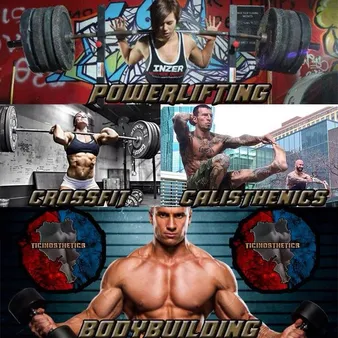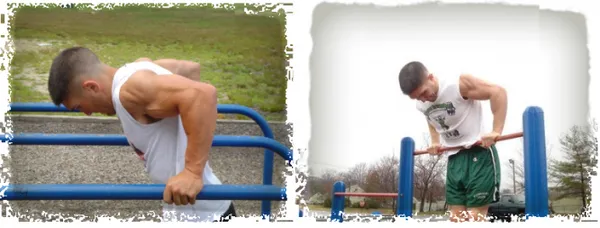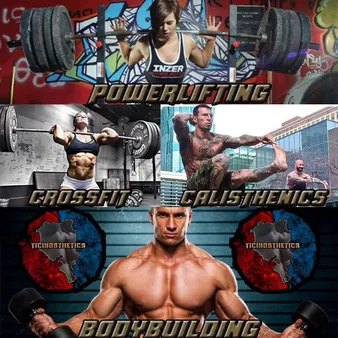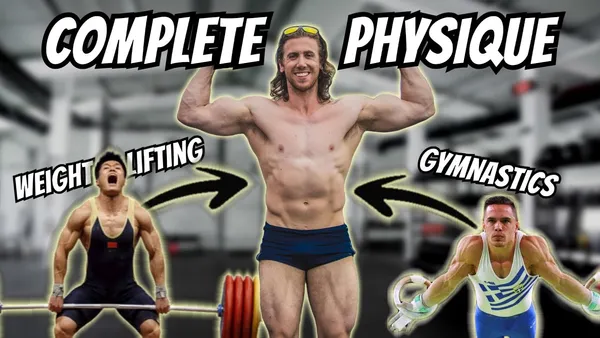Table of Contents
In the realm of fitness, the disciplines of calisthenics and powerlifting stand as distinct yet complementary approaches to building strength and achieving physical prowess. While calisthenics emphasizes bodyweight exercises and dynamic movements, powerlifting focuses on maximizing strength through weighted, isolated exercises. Understanding the differences and similarities between these disciplines can empower you to craft a comprehensive training program that leverages the benefits of both worlds. This guide will delve into the nuances of calisthenics and powerlifting, exploring their advantages, and providing practical strategies for effectively combining these disciplines to unlock your fitness potential on Kizworld.com.
Calisthenics and Powerlifting: A Comprehensive Guide to Building Strength and Power
Attribute | Calisthenics | Powerlifting |
|---|---|---|
Focus | Bodyweight exercises | Weighted exercises |
Equipment | Minimal or no equipment | Requires gym equipment |
Primary Goal | Strength, flexibility, mobility | Building maximal strength |
Movement Patterns | Compound, dynamic exercises | Isolated, compound exercises |
Suitable Population | Beginners to advanced | More suitable for experienced lifters |
Benefits | Improved body composition, enhanced mobility, increased endurance | Increased muscle mass, improved bone density, boosted strength |
I. Calisthenics and Powerlifting: Understanding the Differences
Calisthenics and powerlifting are two forms of exercise that are often compared, but there are some key differences between the two. Calisthenics focuses on bodyweight exercises, while powerlifting focuses on weighted exercises.
Calisthenics can be done anywhere, while powerlifting requires access to a gym. Calisthenics is also generally considered to be more beginner-friendly than powerlifting, as it doesn't require any specialized equipment.
Key Differences Between Calisthenics and Powerlifting
Benefits of Calisthenics and Powerlifting
- **Calisthenics** can improve body composition, enhance mobility, and increase endurance.
- **Powerlifting** can increase muscle mass, improve bone density, and boost strength.
Ultimately, the best type of exercise for you depends on your individual goals and preferences. If you're new to exercise, calisthenics is a great place to start. Once you have a foundation, you can add powerlifting to your routine to continue building strength and power.
Here are some tips for incorporating both calisthenics and powerlifting into your fitness routine:
- Start with calisthenics to build a foundation of strength and mobility.
- Once you have a good foundation, add powerlifting to your routine to build strength and power.
- Listen to your body and rest when you need to.
- Have fun! Exercise should be enjoyable, so find activities that you like and stick with them.
If you have any questions or concerns, be sure to talk to a qualified personal trainer.
Related posts:
- The Difference Between Calisthenics, Gymnastics, and Street Workout
- How to Build Muscle and Strength with Calisthenics
- How to Improve Your Posture
- How to Do a Handstand
- The History and Origins of Calisthenics
Attribute | Calisthenics | Powerlifting |
|---|---|---|
Focus | Bodyweight exercises | Weighted exercises |
Equipment | Minimal or no equipment | Requires gym equipment |
Primary Goal | Strength, flexibility, mobility | Building maximal strength |
Movement Patterns | Compound, dynamic exercises | Isolated, compound exercises |
Suitable Population | Beginners to advanced | More suitable for experienced lifters |
Calisthenics and Powerlifting: Understanding the Differences
II. Unveiling the Similarities Between Calisthenics and Powerlifting
Shared Focus on Strength Development
Calisthenics and powerlifting, despite their distinct approaches, share a common goal: building strength. Calisthenics utilizes bodyweight exercises to develop functional strength, while powerlifting employs weighted exercises to enhance maximal strength. Both disciplines emphasize compound movements that engage multiple muscle groups simultaneously, leading to comprehensive strength gains.
Emphasis on Compound Movements
Compound exercises form the cornerstone of both calisthenics and powerlifting. Calisthenics incorporates exercises like push-ups, pull-ups, and squats, which target multiple muscle groups in a single movement. Powerlifting focuses on compound lifts such as the bench press, squat, and deadlift, which engage major muscle groups and promote overall strength development.
Progressive Overload Principle
The principle of progressive overload is central to both calisthenics and powerlifting. It involves gradually increasing the intensity or volume of training over time to continually challenge the body and stimulate muscle growth. In calisthenics, this may involve adding repetitions or sets to bodyweight exercises, while in powerlifting, it entails incrementally increasing the weight lifted.
Benefits of Incorporating Calisthenics into Powerlifting
Integrating calisthenics into a powerlifting routine offers several benefits. Calisthenics can enhance mobility and flexibility, which are often neglected in traditional powerlifting programs. Bodyweight exercises promote joint health, improve range of motion, and reduce the risk of injuries. Additionally, calisthenics can improve core strength and stability, which are crucial for maintaining proper form during powerlifting exercises.
Techniques for Combining Calisthenics and Powerlifting Effectively
Combining calisthenics and powerlifting requires careful planning and execution. Here are some effective techniques:- **Start Gradually:** Begin by incorporating calisthenics exercises into your warm-up or as a supplement to your powerlifting workouts. Gradually increase the intensity and frequency of calisthenics as you adapt.- **Focus on Compound Movements:** Choose calisthenics exercises that target multiple muscle groups, such as push-ups, pull-ups, and squats. These exercises will complement the compound lifts in your powerlifting program.- **Prioritize Mobility and Flexibility:** Dedicate time to mobility and flexibility exercises before and after your workouts. This will help prevent injuries and improve your overall performance in both calisthenics and powerlifting.- **Listen to Your Body:** Pay attention to your body's response to the combined training. If you experience any pain or discomfort, adjust your program or consult with a qualified professional.- **Related Posts:** - [How to Design Your Own Calisthenics Routine and Program](https://kizworld.vn/how-to-design-your-own-calisthenics-routine-and-program/) - [The Best Calisthenics Exercises and Variations](https://kizworld.vn/the-best-calisthenics-exercises-and-variations/) - [The Benefits of Calisthenics for Bodyweight Training](https://kizworld.vn/the-benefits-of-calisthenics-for-bodyweight-training/) - [How to Build Muscle and Strength with Calisthenics](https://kizworld.vn/how-to-build-muscle-and-strength-with-calisthenics/) - [The Best Calisthenics Equipment and Gear](https://kizworld.vn/the-best-calisthenics-equipment-and-gear/)
Calisthenics | Powerlifting |
|---|---|
Bodyweight exercises | Weighted exercises |
Minimal or no equipment | Requires gym equipment |
Focus on functional strength | Focus on maximal strength |
Compound movements | Compound and isolated movements |
Suitable for beginners to advanced | More suitable for experienced lifters |
Unveiling the Similarities Between Calisthenics and Powerlifting
III. Benefits of Incorporating Calisthenics into Powerlifting
Enhanced Mobility and Flexibility
Calisthenics exercises emphasize bodyweight movements that require a wide range of motion. By incorporating calisthenics into their training, powerlifters can improve their mobility and flexibility, reducing the risk of injuries and enhancing their overall athleticism.Discover how calisthenics can enhance your flexibility and mobility
Calisthenics Exercise | Benefits for Powerlifters |
|---|---|
Squat Jumps | Improve ankle and hip mobility |
Pike Push-Ups | Enhance shoulder and thoracic spine flexibility |
Leg Swings | Increase hip and hamstring flexibility |
Improved Body Composition
Calisthenics exercises often involve compound movements that engage multiple muscle groups simultaneously. This can lead to increased calorie expenditure and improved body composition. Powerlifters who incorporate calisthenics into their training may experience reduced body fat and increased muscle mass.Learn more about the body composition benefits of calisthenics
Increased Endurance
Calisthenics exercises typically involve repetitive movements that require sustained effort. This can help powerlifters develop muscular endurance, which is essential for maintaining performance during prolonged training sessions and competitions.Explore how calisthenics can boost your muscular endurance
Benefits of Incorporating Calisthenics into Powerlifting
IV. Techniques for Combining Calisthenics and Powerlifting Effectively
Incorporate Calisthenics into Powerlifting Warm-ups
Calisthenics exercises can be an effective way to warm up the muscles and prepare the body for powerlifting. Bodyweight squats, push-ups, and lunges can help to increase blood flow, improve mobility, and activate the muscles that will be used during the powerlifting workout.How to Do a Squat
Use Calisthenics as Accessory Exercises
Calisthenics exercises can also be used as accessory exercises to complement powerlifting workouts. For example, bodyweight rows can help to strengthen the back and improve posture, while calf raises can help to strengthen the calves and ankles.How to Do a Pull-Up
Periodize Calisthenics and Powerlifting Training
Periodization is a training technique that involves varying the intensity and volume of training over time. This can help to prevent overtraining and plateaus. When combining calisthenics and powerlifting, it is important to periodize the training so that the body has time to recover and adapt.
Company | Contact | Country |
|---|---|---|
Alfreds Futterkiste | Maria Anders | Germany |
Listen to Your Body
It is important to listen to your body when combining calisthenics and powerlifting. If you experience any pain or discomfort, stop the exercise and consult with a medical professional. It is also important to get enough rest and nutrition to support your training.How to Design Your Own Calisthenics Routine and Program
Benefits of Combining Calisthenics and Powerlifting
There are many benefits to combining calisthenics and powerlifting. These benefits include:
- Improved strength and power
- Increased muscle mass
- Enhanced mobility and flexibility
- Reduced risk of injury
- Improved body composition
Techniques for Combining Calisthenics and Powerlifting Effectively
V. Conclusion
Calisthenics and powerlifting are both excellent forms of exercise that can provide a variety of benefits. Calisthenics is a great way to improve bodyweight strength, flexibility, and endurance, while powerlifting is a great way to build muscle mass and strength. Both forms of exercise can be tailored to fit any fitness level, and they can be done anywhere, making them a great option for people who are short on time or money. Ultimately, the best form of exercise for you is the one that you enjoy and that you can stick with. If you're not sure which one is right for you, try both and see which one you prefer. You may even find that you enjoy combining the two forms of exercise to create a well-rounded fitness routine.